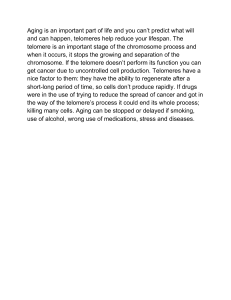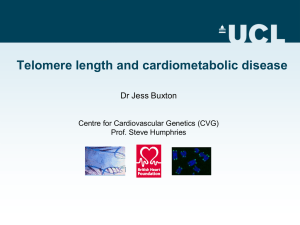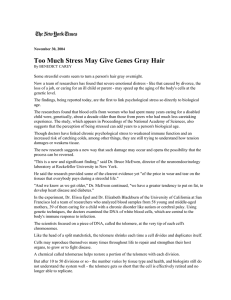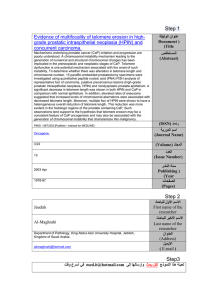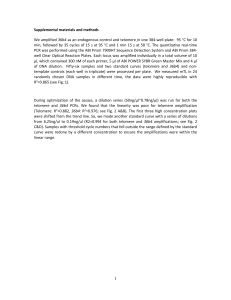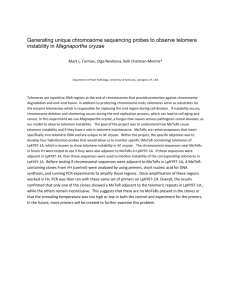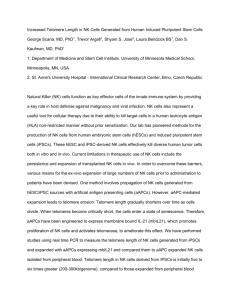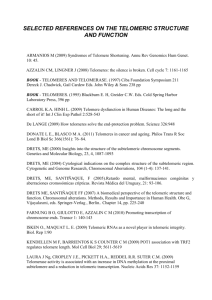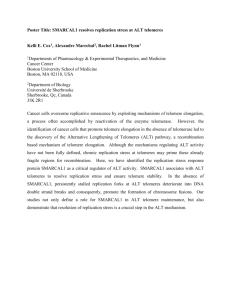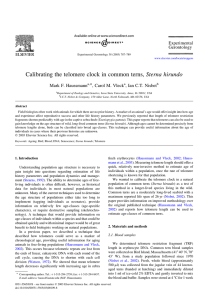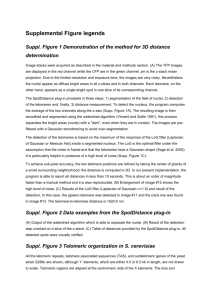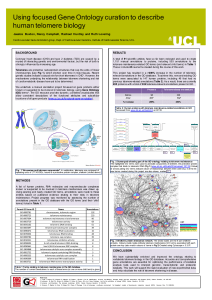TELOMERE LENGTH IN COMMON TERNS IN RELATION TO AGE, Bauch Christina
advertisement
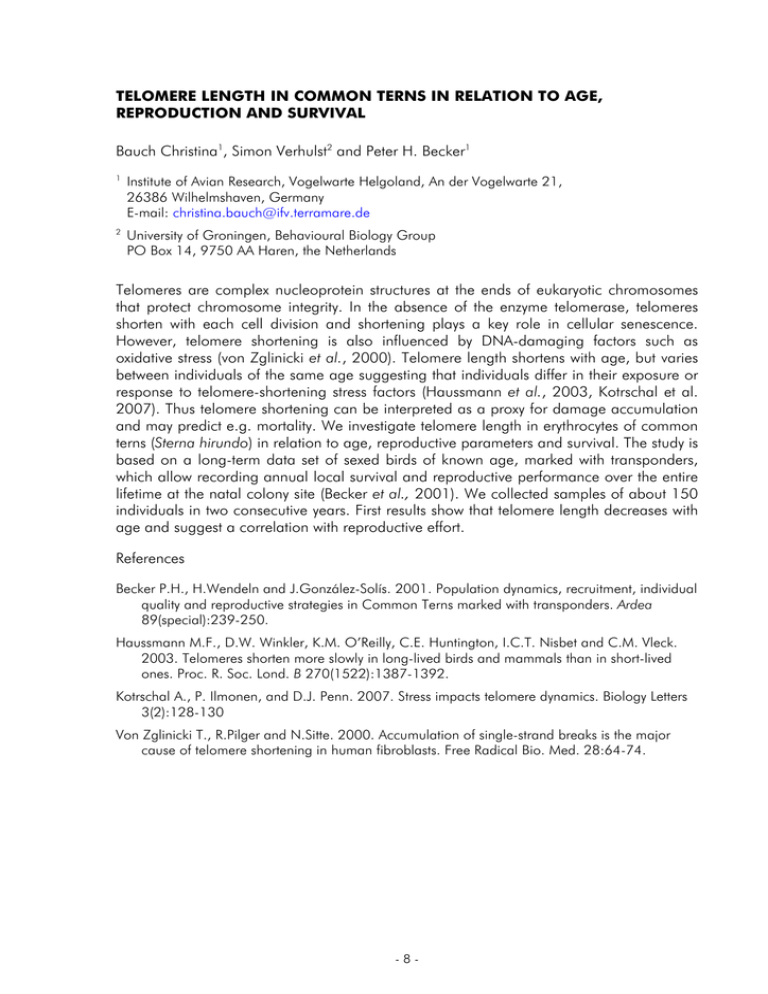
TELOMERE LENGTH IN COMMON TERNS IN RELATION TO AGE, REPRODUCTION AND SURVIVAL Bauch Christina1, Simon Verhulst2 and Peter H. Becker1 1 Institute of Avian Research, Vogelwarte Helgoland, An der Vogelwarte 21, 26386 Wilhelmshaven, Germany E-mail: christina.bauch@ifv.terramare.de 2 University of Groningen, Behavioural Biology Group PO Box 14, 9750 AA Haren, the Netherlands Telomeres are complex nucleoprotein structures at the ends of eukaryotic chromosomes that protect chromosome integrity. In the absence of the enzyme telomerase, telomeres shorten with each cell division and shortening plays a key role in cellular senescence. However, telomere shortening is also influenced by DNA-damaging factors such as oxidative stress (von Zglinicki et al., 2000). Telomere length shortens with age, but varies between individuals of the same age suggesting that individuals differ in their exposure or response to telomere-shortening stress factors (Haussmann et al., 2003, Kotrschal et al. 2007). Thus telomere shortening can be interpreted as a proxy for damage accumulation and may predict e.g. mortality. We investigate telomere length in erythrocytes of common terns (Sterna hirundo) in relation to age, reproductive parameters and survival. The study is based on a long-term data set of sexed birds of known age, marked with transponders, which allow recording annual local survival and reproductive performance over the entire lifetime at the natal colony site (Becker et al., 2001). We collected samples of about 150 individuals in two consecutive years. First results show that telomere length decreases with age and suggest a correlation with reproductive effort. References Becker P.H., H.Wendeln and J.González-Solís. 2001. Population dynamics, recruitment, individual quality and reproductive strategies in Common Terns marked with transponders. Ardea 89(special):239-250. Haussmann M.F., D.W. Winkler, K.M. O’Reilly, C.E. Huntington, I.C.T. Nisbet and C.M. Vleck. 2003. Telomeres shorten more slowly in long-lived birds and mammals than in short-lived ones. Proc. R. Soc. Lond. B 270(1522):1387-1392. Kotrschal A., P. Ilmonen, and D.J. Penn. 2007. Stress impacts telomere dynamics. Biology Letters 3(2):128-130 Von Zglinicki T., R.Pilger and N.Sitte. 2000. Accumulation of single-strand breaks is the major cause of telomere shortening in human fibroblasts. Free Radical Bio. Med. 28:64-74. -8-
